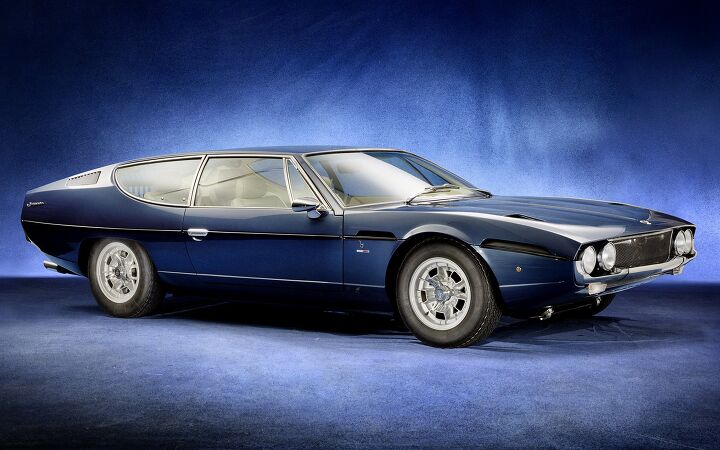#LamborghiniIslero
Rare Rides Icons: Lamborghini's Front-Engine Grand Touring Coupes (Part IX)
We return to our timeline of front-engine Lamborghini GT coupes, but take a step back in time. Our last entry left us at the conclusion of 1969 when the slow-selling Islero ground to a halt. Dealers had a difficult time shifting all 225 examples of the Islero, comprising 125 regular Isleros and 100 of the upgraded Islero S.
Ferruccio Lamborghini dictated the Islero’s restrained and elegant design to Mario Marazzi, after several concepts to replace the aged 400GT did not meet with the boss’s approval. What Lamborghini was really after was a four-seat grand tourer in the finest tradition of grace and pace. The Islero fit most of those qualifications, but was a 2+2 and (as mentioned) almost impossible to sell. Luckily, there was another front-engine Lamborghini GT that debuted at almost the same time as Islero in 1968. Say hello to Espada.
Rare Rides Icons: Lamborghini's Front-Engine Grand Touring Coupes (Part VIII)
We return to our Rare Rides Icons coverage of Lamborghini’s front-engine coupes at a moment of relative triumph. After three earlier design proposals failed to pass muster with Ferruccio Lamborghini, a fourth received approval and was chosen as the 400GT’s replacement. Part of an in-house collaborative effort between Mr. Lamborghini, Carrozzeria Marazzi, and Lamborghini’s engineers, the resulting coupe was sedate, elegant, and not that removed from the outgoing 400GT 2+2.
Rare Rides Icons: Lamborghini's Front-Engine Grand Touring Coupes (Part VII)
When we last left Lamborghini’s front-engine coupe timeline, Ferruccio Lamborghini found himself about out of time to designate a replacement for the 400GT 2+2. Touring’s Flying Star II two-seat shooting brake was radical and possessed neither the restrained GT styling Mr. Lamborghini desired, nor the full four-place capacity. The company turned to Bertone and design legend Marcelo Gandini, who proposed the four-seat Marzal.
The Marzal’s design was as radical as the Flying Star if not more, and had gullwing doors and an interior filled with silver textile. After it debuted Ferruccio remarked how the Marzal was just a fun design exercise and was not intended to be a production car. Whether that statement was actually true remains unclear, but seems unlikely given the events that occurred post-Marzal. Lamborghini needed a real production design, and fast.
Rare Rides Icons: Lamborghini's Front-Engine Grand Touring Coupes (Part V)
Lamborghini proved it could make a luxurious grand touring coupe that a few people were willing to buy instead of a Ferrari with its first-ever production car, the 350GT. Based on the 350GTV prototype that was not actually drivable, the 350GT eventually grew and matured into the very similar 400GT we featured last time.
At its inception, the 400GT was just a 350GT with a larger engine, since the intended roof edits to turn the 2+1 into a 2+2 were not production ready. Lamborghini advertised the 350, 400, and 400 2+2 as three separate models, a fun take on the truth. But after three variations of the original 350 design, it was time for something new. The replacement process was not without drama.



















Recent Comments